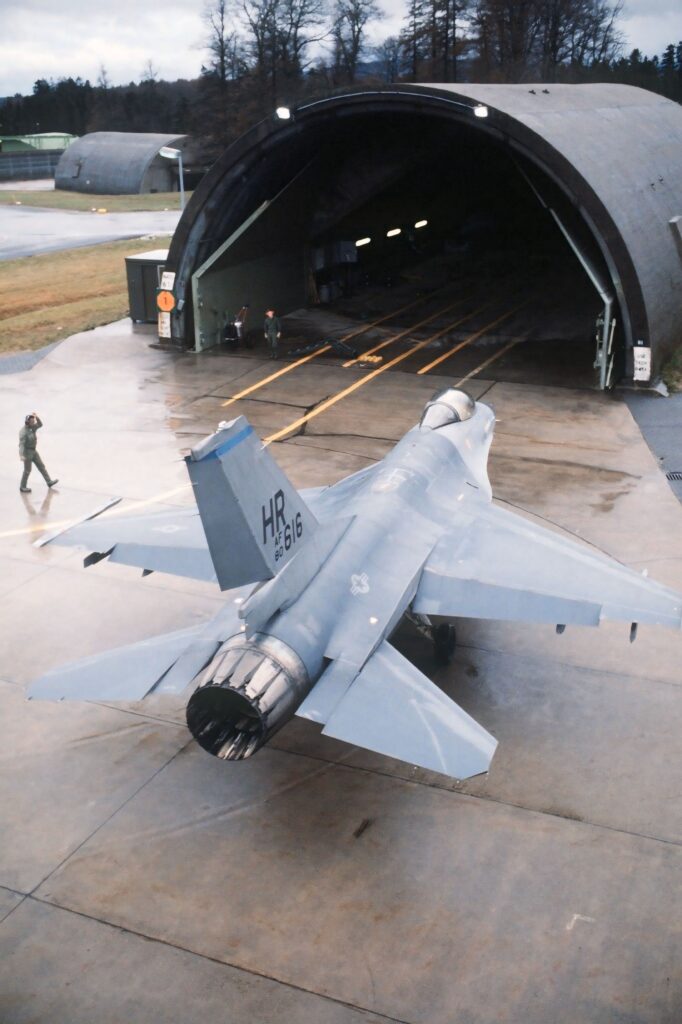
The F-16A Fighting Falcon is one of the most iconic and widely used fighter aircraft in modern aviation history. First introduced in the late 1970s, it was designed by General Dynamics, later acquired by Lockheed Martin, as a lightweight multirole fighter that could provide agility, speed, and advanced avionics at a lower cost compared to heavier fighters of the era. Over the years, it has become a backbone aircraft for many air forces around the world, serving in both combat and deterrence roles.
The F-16A was the first production model of the Fighting Falcon, and it introduced many design features that would become standard in later generations. One of its most notable aspects is the frameless bubble canopy, which offers pilots exceptional visibility—an essential advantage in dogfighting and low-level attack missions. The side-mounted control stick was another innovation, giving pilots more precise handling during high-G maneuvers. The F-16A also incorporated a fly-by-wire control system, which replaced traditional mechanical linkages with electronic signals. This allowed for a more responsive and stable aircraft that could handle extreme aerodynamic stresses while remaining controllable.
Powered by a single Pratt & Whitney F100 turbofan engine, the F-16A was capable of speeds exceeding Mach 2. Its thrust-to-weight ratio gave it excellent acceleration and climb performance, which made it highly competitive against contemporary Soviet aircraft. Designed initially as a day fighter, the F-16A quickly proved adaptable, taking on ground-attack roles with equal effectiveness. Its nine hardpoints allowed it to carry a variety of weapons, from air-to-air missiles to guided bombs and rockets. This flexibility helped transform the aircraft into a true multirole platform rather than just a specialized fighter.
In addition to its performance, the F-16A stood out for its affordability and ease of maintenance. Compared to larger, more complex aircraft like the F-15 Eagle, the Fighting Falcon was less expensive to procure and operate, making it an attractive option for U.S. allies. As a result, the aircraft was exported widely, with dozens of countries adopting it into their fleets. Nations such as Belgium, the Netherlands, Norway, Denmark, Israel, and later many others in Europe, the Middle East, and Asia, came to rely on the F-16A as their primary combat aircraft.
The aircraft saw extensive service in numerous conflicts, where it demonstrated both resilience and effectiveness. Israeli F-16As played a decisive role in the 1981 Operation Opera, which destroyed Iraq’s Osirak nuclear reactor. Later, the type participated in the Gulf War, where coalition F-16s flew thousands of sorties against Iraqi targets. Over time, the original F-16A was upgraded with improved avionics, radar systems, and weapon compatibility, extending its service life well beyond initial expectations.
Though newer variants such as the F-16C/D and the advanced F-16V have since surpassed the original model, the F-16A remains significant in aviation history. It marked the beginning of one of the most successful fighter aircraft lines ever built, with over 4,500 F-16s produced worldwide. Its combination of speed, agility, versatility, and affordability set a new standard for combat aircraft.
The F-16A Fighting Falcon is more than just a first-generation model—it is the foundation of a fighter family that continues to shape air power into the 21st century. Its enduring legacy lies in how it proved that a lightweight, affordable fighter could dominate the skies and remain relevant for decades.


